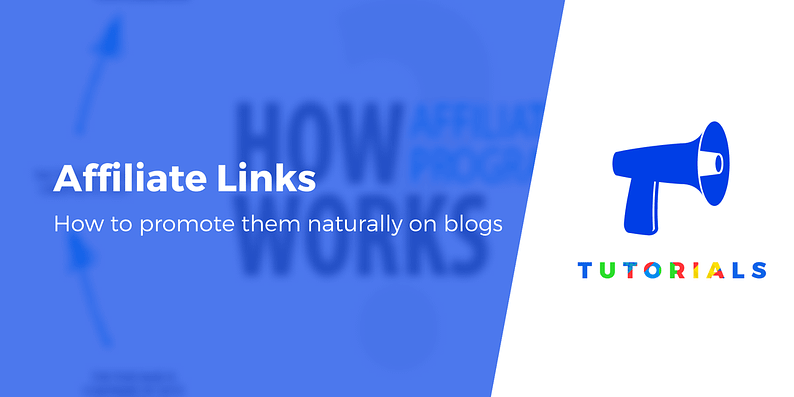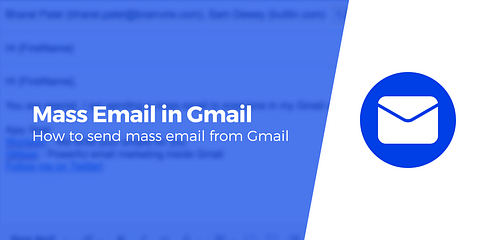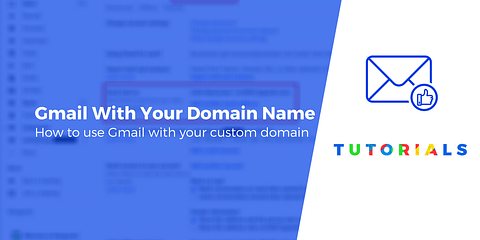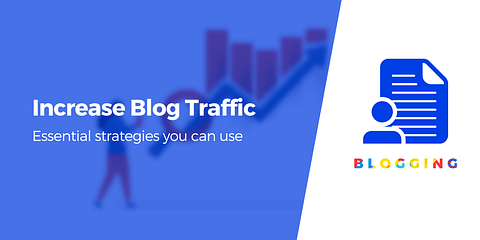Affiliate marketing is one of the most popular ways to make money online. Joining programs and partnering with brands is easy enough – the challenge is learning how to promote affiliate links without coming across as pushy.
Fortunately, you don’t need to fill your posts with links to boost your income. By creating high-quality and helpful content, you can promote your products more naturally and less aggressively.
👉 In this post, we’ll show you how to promote affiliate links naturally in your blog posts. We’ll include some essential tips and provide examples to help you get started.
📚 Table of contents:
- Create tutorials and how-to guides 🚧
- Publish gift guides or round-ups 🖱️
- Send informative and helpful newsletters 📨
- Share recommendations in posts and comments 👨💻
- Write honest product reviews ✍️
1. Create tutorials and how-to guides 🚧
After joining a few affiliate programs, you’ll need to find ways to promote brands and products on your blog. However, many bloggers mistakenly think that the more links they include in their posts, the more sales they can make.
Stuffing posts with affiliate links can put your readers off. It might look like you’re trying very hard to sell your audience something.
Instead, you’ll want to place the focus on the content. Additionally, it might be a good idea to simply highlight one or two products in your post, rather than trying to fit in as many as possible.
An effective way to do this is to create tutorials and how-to guides based around a single affiliate product. The content will focus on helping the reader with a tool that you can simultaneously promote.
👉 For example, let’s say you have a photography blog. You can show readers how to edit their landscape photos using editing software that you’re affiliated with:

You can include the affiliate link within the text, but avoid using it every time you mention the product. This hard-sell approach might be a little off-putting and can work against you.
Additionally, you’ll want to include an affiliate disclosure in your post. It’s important to let readers know that you will earn a commission from any purchase they might make, at no extra cost:

This disclosure will help you build trust with your audience. Therefore, users will be less wary of clicking on the affiliate link and making a purchase. In some jurisdictions, it’s also required by law (and/or the company that you’re affiliated with might require you to make a disclosure).
Likewise, if you run a culinary blog, you can show readers how to make a particular dish with a specific food brand. If you promote products you actually use, you should have no problems creating helpful content around them.
2. Publish gift guides or round-ups 🖱️
Another way to promote affiliate products is to create gift guides for different occasions. This technique can help you advertise multiple products.
However, it may be a little tricky to use the links naturally in your posts in this case. You’ll want to fill a page with products without making it look too salesy:

Let’s look at a few tips to keep in mind when writing gift guides:
- Use both affiliate and non-affiliate products.
- Tell readers why you love this product and how you use it.
- Highlight the benefits of the product.
Similarly, you might consider writing round-ups of your favorite tools or products. For example, you might share a list of gadgets that you always carry with you when you travel. Alternatively, you could make a list of your favorite books or publish packing lists for different purposes and destinations.
Once again, you’ll want to use a mix of affiliate and non-affiliate items to make the post feel less promotional. Additionally, we recommend avoiding writing generic product descriptions. Instead, you can show readers why you like this item and how it can help them.
If possible, try to use photos that you’ve taken yourself. For example, you could include an image of yourself using the product. This picture will make the post look more authentic.
3. Send informative and helpful newsletters 📨
You don’t need to run an eCommerce business or online shop to start a newsletter. As a blogger, you can create an email list to stay in touch with your audience and keep them engaged.
A newsletter presents another opportunity to promote your affiliate products. However, as with blog posts, you’ll want to use your links naturally within your content.
Let’s say you send a weekly newsletter where you share a different marketing strategy each time:

👉 For example, you could talk about using a content schedule to plan your campaign more effectively. You could then recommend a calendar tool or plugin that you find helpful (and that you’re affiliated with).
You don’t need to come up with fresh content for your newsletter. Instead, you can simply repurpose your blog posts into short, informative emails.
For instance, if you’ve written a complete guide to search engine optimization (SEO), you can turn it into a series of emails. Every week, you could share an effective SEO strategy, followed by recommending a tool or product that can help readers implement it. You might even suggest a course that you’re affiliated with.
You can use an email marketing service like Brevo to send engaging newsletters and promote affiliate links. This tool has a user-friendly interface and a drag-and-drop builder to help you create beautiful emails in minutes. Additionally, you can schedule your emails in advance.
Alternatively, you might use newsletters to direct subscribers to posts that contain affiliate links. You could send an email with tips for taking photos in bad weather. Then, you could include a link to an article where you share a list of waterproof gear.
4. Share recommendations in posts and comments 👨💻
Perhaps the most natural way to promote affiliate links is by making a recommendation. This tip involves suggesting products and services that you genuinely love (and use!).
👉 For example, let’s say you’re writing a destination guide. You could recommend a tour company you’ve used in the past. Alternatively, you might show readers how a particular guidebook helped you get off the beaten path and explore the best restaurants. Then, you could simply include an affiliate link so that readers can purchase the product.
With this approach, you’re not planning your posts around affiliate products. Instead, you can simply mention or recommend an item or service that you found helpful while you were working on something or exploring a place:

Additionally, you could use your affiliate links in post comments. For instance, sometimes users may ask for a recommendation or suggestions. This scenario presents an opportunity to promote a product.
Alternatively, a reader might ask for your help with something. Here, you could compose a helpful reply and include an affiliate link to a product that might help resolve their problem.
However, you’ll need to let the reader know that you’re giving them an affiliate link. Otherwise, they might think that you’re trying to profit from them.
5. Write honest product reviews ✍️
Finally, you can promote your affiliate products by publishing honest reviews. The key here is to write reviews with the reader in mind.
You’ll want to talk about products relevant to your target audience and which most of your followers would be interested in. If you start writing about items that are outside of your niche, you might alienate your readers.
Let’s look at some key points to consider when writing your product reviews:
- Be honest. You might consider discussing both the pros and cons of using the product.
- Provide value. Show readers how the product can help them achieve a goal or solve a problem.
- Be transparent. Include an affiliate disclosure and let readers know that the brand did not pay you to promote the product.
Additionally, you might create a video to accompany the review:

A high-quality video can generate more interest in the product, leading to more clicks and sales. You might even post your video on social media platforms, such as Facebook or Instagram, and include the affiliate link in the post.
If you’re an Amazon Associate, you’re spoilt for choice with product reviews. You can buy items that you’re interested in (and that your readers might also like), test them out, and share your experience in a detailed post.
Start earning with affiliate marketing 💵
As you may know, affiliate marketing is one of the most popular ways to monetize a blog. However, filling up entire posts with affiliate links can do more harm than good. Therefore, it’s important to incorporate products into your content without being too salesy.
In this post, we looked at how to promote affiliate links naturally on your blog:
- Create tutorials and how-to guides around a product that you use.
- Publish gift guides or round-ups of your favorite products.
- Send helpful newsletters with links to relevant products.
- Share recommendations in posts and comments.
- Write honest product reviews.
If you’re ready to begin, check out our guide to getting started with affiliate marketing on WordPress.
Do you have any questions about promoting affiliate links in blog posts? Let us know in the comments section below!




















Or start the conversation in our Facebook group for WordPress professionals. Find answers, share tips, and get help from other WordPress experts. Join now (it’s free)!